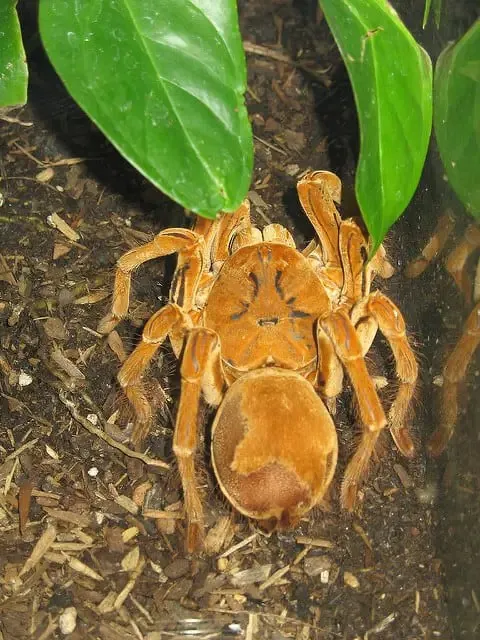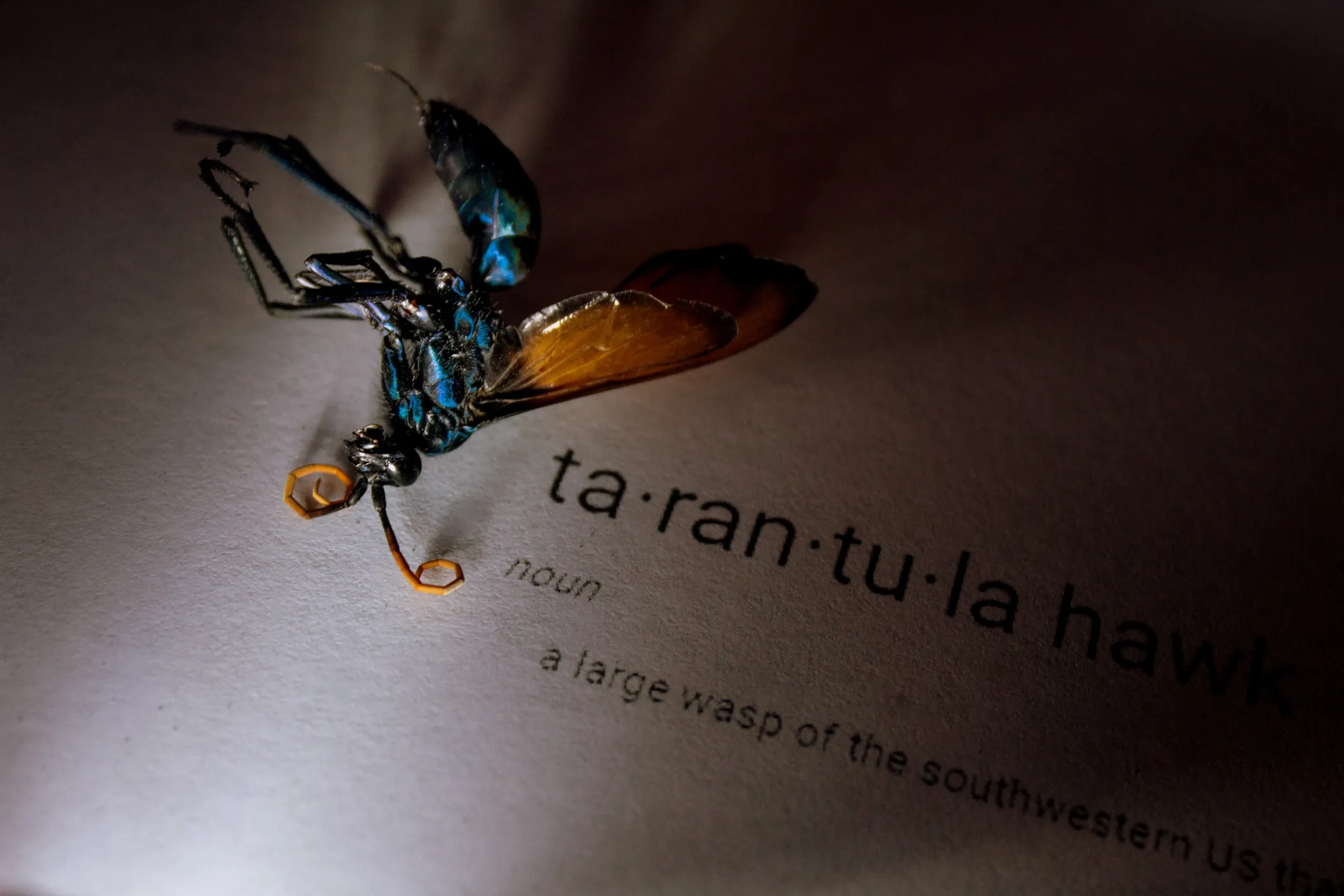Tarantula Hawk Wasp vs Goliath Bird-Eating Spider: The Deadly Showdown
The natural world is full of incredible battles, and few are as dramatic or as terrifying as the clash between the Tarantula Hawk Wasp and the Goliath Bird-Eating Spider. This showdown is a testament to the raw power of nature, where a seemingly fragile insect can take on one of the world’s largest spiders. This article will delve into the lives of these two fascinating creatures, exploring their characteristics, behaviors, and the brutal dance they perform in the wild. Prepare to be amazed by the survival strategies of these incredible animals, and the brutal efficiency of their interactions. The stage is set for a duel between titans, a fight for survival played out in the depths of the rainforest and arid environments they call home. This isn’t just a fight; it’s a survival story.
Understanding the Goliath Bird-Eating Spider
Physical Characteristics & Size

The Goliath Bird-Eating Spider (Theraphosa blondi) is the largest spider in the world by mass and is truly a sight to behold. Its legs can span up to a foot in length, and it can weigh over six ounces. This massive size gives it a formidable presence in its habitat. The spider’s body is covered in a dense coat of hairs, providing both sensory input and a degree of protection. Their fangs, though not used for hunting birds, can be quite impressive in size, capable of delivering a painful bite. The sheer scale of this spider is enough to instill a sense of awe and respect for nature’s design, highlighting its place at the top of the food chain in its ecosystem. The coloration is typically a dark brown, providing excellent camouflage in its forest environment.
Habitat & Distribution
These colossal spiders are primarily found in the rainforests of northern South America. They inhabit the humid environments of countries like Suriname, Guyana, French Guiana, and parts of Brazil and Venezuela. They prefer burrows in the ground, often near trees or under rocks, where they can create a safe haven from predators and the elements. Their distribution is limited by their need for specific climatic conditions, including high humidity and relatively stable temperatures. The spider’s habitat is crucial to its survival, providing not only shelter but also a rich environment for finding prey. Understanding their habitat is essential to understanding the spider’s behavior and the challenges it faces in the wild. Conservation efforts must consider the protection of their native habitats to ensure their continued survival.
Diet and Hunting Strategies
Despite its name, the Goliath Bird-Eating Spider rarely consumes birds. Its diet primarily consists of insects, other spiders, and small vertebrates like lizards and rodents. The spider is an ambush predator, lying in wait within its burrow or nearby, ready to pounce on unsuspecting prey. They use their fangs to inject venom, which immobilizes the prey, and then they inject digestive enzymes to liquefy the insides before consuming it. Their hunting strategy is a combination of patience and brute force. The spider’s ability to remain still for long periods and then quickly strike makes it a highly effective hunter in its environment. This hunting strategy requires a deep understanding of their environment and the behavior of their potential prey. Their diet highlights their position as a keystone species in their ecosystem, controlling populations of smaller animals.
The Tarantula Hawk Wasp: A Fierce Predator

Appearance and Features
The Tarantula Hawk Wasp is one of the largest wasps in the world, known for its striking appearance and excruciating sting. These wasps typically have a bluish-black body with orange or rust-colored wings. Their size is impressive, with females reaching up to two inches in length. The wasp’s vibrant colors serve as a warning to potential predators, indicating its potent sting. The wasp’s long legs and powerful mandibles are also essential for their predatory behavior, especially when hunting and manipulating their prey. The visual impact of this wasp is unforgettable, contributing to its notoriety and the respect it commands in its habitat. The combination of its size, color, and potent sting makes it one of the most formidable insects in the world.
Life Cycle and Behavior
The Tarantula Hawk Wasp’s life cycle is intimately connected to the survival of tarantulas. The female wasp is the primary hunter, and she seeks out tarantulas to paralyze them and use them as a host for her larvae. The wasp’s behavior is a remarkable example of specialized predation. The males feed on nectar and do not possess stingers. The mating process is a display of aerial acrobatics, with the male guarding the female. This wasp is a solitary creature except during mating. The wasp’s life cycle emphasizes its crucial role in the ecosystem, controlling the population of tarantulas. The lifecycle is a continuous loop, ensuring the survival of the species and their symbiotic relationship.
The Hunt: Wasp vs Spider

The Stinging Process
The Tarantula Hawk Wasp’s sting is considered to be one of the most painful stings in the world, and the sting is the key weapon in the wasp’s hunt. The wasp will often engage in a brief but fierce battle with the spider, utilizing its agility and speed to avoid the spider’s fangs. The sting itself is delivered into a nerve center of the spider, which is a precisely targeted strike. The wasp’s goal is to paralyze the spider, allowing it to be used as a host for its larvae. The stinging process is a testament to the wasp’s efficiency as a predator and its knowledge of the spider’s anatomy. The sting is not intended to kill the spider immediately but to subdue it, ensuring it remains fresh for the larvae.
Paralyzing the Spider
Once the wasp has successfully stung the tarantula, the venom rapidly takes effect, paralyzing the spider. The spider is rendered immobile but remains alive. This is a crucial step in the wasp’s lifecycle, as the paralyzed spider will serve as a living food source for the wasp larvae. The paralysis can last for several weeks, giving the wasp plenty of time to complete the next steps. This process showcases the intricate adaptations of both predator and prey. The venom’s effects are precise, ensuring the spider is preserved for the wasp’s offspring. The careful orchestration of this process highlights the sophisticated survival strategies found in the natural world.
Laying Eggs

After paralyzing the spider, the female tarantula hawk wasp will drag the spider back to its burrow or a pre-existing cavity. The wasp then lays a single egg on the spider’s abdomen. The egg is carefully placed so that the emerging larva will have easy access to its host. This act is a remarkable display of parental care, albeit in a parasitic way. The wasp ensures that its offspring have a secure food supply. The wasp then seals the burrow entrance, leaving the spider and egg to their fate. The entire process is a carefully orchestrated sequence, ensuring the wasp’s offspring will have a perfect environment for growth and survival.
The Spider’s Fate
The Wasp Larvae’s Diet
Once the wasp egg hatches, the larva begins to feed on the paralyzed spider. The larva consumes the spider alive, starting with the less vital organs to keep the spider alive as long as possible. This gruesome but efficient process can last for several weeks. The larva grows rapidly as it feeds on the spider, eventually transforming into a pupa. This stage in the life cycle highlights the brutal nature of survival in the wild. The larva’s diet is a testament to the parasitic relationship between the wasp and the spider. The larva’s ability to extract nutrients from the spider is crucial for its survival and growth.
The Aftermath

After consuming the spider, the wasp larva pupates inside the spider’s exoskeleton. It eventually emerges as an adult tarantula hawk wasp, ready to repeat the cycle. The spider’s exoskeleton becomes a cocoon, protecting the developing wasp. This lifecycle emphasizes the interconnectedness of ecosystems and the role of each organism. The transformation is a reminder of the ever-changing nature of life in the wild. The cycle of predation and parasitism continues, driving the evolution of both species. This is a reminder of the circle of life, where one creature’s demise ensures the survival of another.
Survival Strategies & Defense Mechanisms
Spider’s Defenses
The Goliath Bird-Eating Spider has several defense mechanisms to protect itself from predators. One of its primary defenses is the urticating hairs on its abdomen. When threatened, the spider flicks these hairs into the eyes and mucous membranes of its attacker, causing irritation and deterring the predator. They also possess large fangs and a painful bite, although this is not always effective against the wasp. Their large size and powerful legs can allow them to escape, but the wasp’s agility often overcomes these advantages. The spider’s defenses are a display of its adaptations for survival. The spider’s use of multiple defenses improves its chances of avoiding predation in its environment.
Wasp’s Tactics

The Tarantula Hawk Wasp employs a number of tactics to overcome the spider’s defenses. Its thick exoskeleton offers protection against the spider’s fangs and is often the difference in the fight. They are incredibly agile and can maneuver quickly to avoid the spider’s attacks. The wasp’s sting is a precisely targeted attack designed to paralyze the spider, and a specialized tool to incapacitate its prey. The wasp’s tactics are a testament to its efficiency as a predator. The wasp’s arsenal of strategies increases its odds of success. The wasp uses its speed and knowledge to survive in a harsh environment.
Conclusion of the Showdown
The battle between the Tarantula Hawk Wasp and the Goliath Bird-Eating Spider is a dramatic example of predator-prey dynamics in the wild. The wasp, with its specialized hunting strategies, and the spider, with its formidable size and defenses, represent the raw power and intricacy of nature’s design. The outcome of this battle is often determined by a combination of factors, including the size and condition of the spider, the wasp’s experience, and the specific environment. While the spider can sometimes fend off the wasp, the wasp typically prevails, ensuring the continuation of its life cycle. This clash reminds us of the challenges, strategies, and interdependencies that drive life on Earth. The next time you find yourself in the wilderness, remember the silent battles that occur constantly, illustrating the enduring power of survival and the complex dance of life and death.
